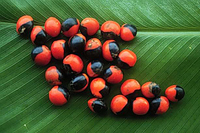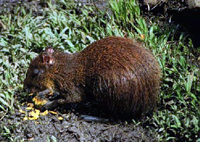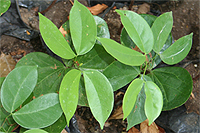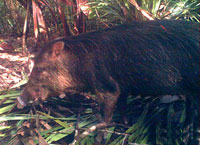

| Welcome |
| A Neotropical Rainforest |
| Nicaragua |
| Rainforest Research |
Plants: |
| Insects: |
| Bullet Ants |
| Leafcutter Ants |
| Birds: |
| Mammals: |
| Howler Monkeys |
| Three-toed Sloth |
| Baird's Tapir |
| Jaguar |
| White-lipped Peccary |
| Agouti |
| Reptiles and Amphibians: |
| Red-eyed Tree Frog |
| Poison Dart Frog |
| Helmeted Iguana |
| Eyelash Viper |
| Terciopelo Viper |
| Spectacled Caiman |
| American Crocodile |
| Human Systems: |
| Rainforest Boy |
| Rainforest Girl |
| Traditional Ecological Knowledge |
| Deforestation |
| Rainforest Research |
|
When a tree falls in the forest: Trees are the foundation of the tropical rainforest, but this foundation is always changing. Adult trees die of old age, fall down in wind storms, or are struck by lightning, leaving an open spot called a "GAP". The competition to be the next tree in that spot is an intense process.
|

Copyright Gerald R. Urquhart
Michigan State University
Students and teachers have permission to quote text and use images from this website in class assignments. Images may be used in classroom and academic presentations with notification of author. All other use should request permission.
Virtual Rainforest development supported by grant #0815966 from the


 rainforest, where seeds become seedlings and struggle to grow into trees.
rainforest, where seeds become seedlings and struggle to grow into trees. If the seeds are lucky enough to not get eaten by an
If the seeds are lucky enough to not get eaten by an  UNDREDS of THOUSANDS of tiny seedlings try to find patches of light, but often have to survive in the dark understory of the forest. They are six inches tall. Some die from lack of light.
UNDREDS of THOUSANDS of tiny seedlings try to find patches of light, but often have to survive in the dark understory of the forest. They are six inches tall. Some die from lack of light. A
A  The circled part of the picture is where a treefall gap has ocurred. Smaller trees within the gap are growing to take the place in the canopy
The circled part of the picture is where a treefall gap has ocurred. Smaller trees within the gap are growing to take the place in the canopy
